UNESCO Recognizes Trogir Brand Strategy as Positive Cultural Tourism Example
November 17, 2021 - The Trogir brand strategy 'Marked by Masters,' officially presented in November 2019, has been recognized by UNESCO as a positive cultural tourism example.
At the end of 2019, the city of Trogir made a big step forward by presenting a new branding strategy, slogan, and visual identity, which was complemented by signage in the city, promotional materials, and a new website, jointly created by the city and the tourist board, reports HRTurizam.
Thus, Trogir became the first destination on the coast and the first city in Croatia, which began branding at such a serious and professional level. The project is called Marked by Masters, and you can read more about it on TCN HERE.
The Trogir brand strategy was recognized as a positive practice by UNESCO. Namely, on its official website, UNESCO writes about the Trogir branding project in the context of its importance for the sustainable development of the destination. "The new branding strategy of the city based on cultural values and community participation aims to increase the attractiveness of Trogir as a destination for cultural tourism," says UNESCO.
This is further confirmation of the value and importance of the project started two years ago, which will be intensively developed in the next five to ten years. It is necessary to fully implement it according to the experience of international cities, said the city of Trogir, adding that they are excited that UNESCO has confirmed their work by sharing the case study for the City of Trogir, authored by the Fabular agency.
"In the Middle Ages, world-class masters worked in Trogir, such as masters Radovan, Nikola Firentinski, Muscardel, Andrea Alessi, and Duknović, creating masterpieces, but also leaving smaller, detailed traces in the old town. The challenge was to unite the city's masters with "medieval graffiti" and games carved into the stone, like chess and merel, which we did by creating a story that called for discovering the traces of masters in every corner of this beautiful city."
According to UNESCO, if the project is fully implemented in accordance with the described plans, the initiative could contribute to sustainable development and the UNWTO (Sustainable Development and the Sustainable Development Goals) sustainable development goals. Trogir has been on the UNESCO list since 1997.
Follow our dedicated travel page for more information on Trogir, Marked by Masters, and much more.
Trogir, Marked by Masters: Traditional A Cappella Singing by Klapa Trogir
March 3, 2020 - TCN meets the modern masters of Trogir in our latest series. Next up, traditional a cappella singing by Klapa Trogir.
In November 2019, Trogir unveiled a new branding strategy, visual identity, and promotional video, becoming the first coastal destination in Croatia to use branding at such a serious and professional level.
The result of the creative process is the slogan “Marked by Masters”, influenced by the continuity of life in Trogir for over 3600 years, the great masters who have operated in Trogir since the Middle Ages, and the indelible traces that these masters leave.
While the medieval master builders, sculptors, and stone-cutters who lived and created in Trogir left their mark through the traces of graffiti around the town, centuries later, we can find Trogir’s modern masters thriving as artists, chefs, jewelers, tailors, and klapa singers, to name a few.
Today, we meet Klapa Trogir, whose traditional a capella folk songs have decorated the squares of Trogir for over half a century.
The narrow arched streets, beneath the Romanesque, Gothic and Renaissance windows and balconies of ancient Trogir, have always echoed the songs of heavyweights, fishers, and sailors. The catchy or rustic tunes marveled wonderfully at the city's turbulent past. These Dalmatian folk tunes originate from the everyday life of a coastal man whose traces are rooted in the centuries-old singing of folk fraternities of medieval churches. Thus, 56 years ago, Klapa Trogir klapa was borne out of the same environment.
Klapa Trogir was founded in 1964, at the premises of the Kolo Cultural and Art Society, which has cultivated the rich tradition of the Trogir choir since its foundation in 1919. Formed by friends and folk singers who first called themselves 'Grupa Dalmatinaca', they were one of the first formally formed vocal bodies of Klapa founded in Dalmatia.
Hoping to prove themselves at the first-ever Omiš Klapa Festival in 1967, Grupa Dalmatinaca needed to change their name in order to perform. After contemplating many stage names, "Oktet Trogir" was accepted.
Oktet Trogir performed folk tunes “Cviće moje”, “Ako si pošla spat” and “Blago, blago” and was awarded the second-largest cash prize by the jury.
A long-time member of the jury, distinguished historian and cultural worker Željko Rapanić reviewed their performance in Slobodna Dalmacija:
"... in the great flood of fabricated pseudo folklore and folk music, nurturing the original Dalmatian song as a musical expression of a particular and independent ethnic medium and ambiance has its deep meaning ... in this sense, we would emphasize Oktet Trogir..."
For the next 20 years, Klapa Trogir confirmed its quality by winning twenty awards from the Omiš jury or audience - and in 1986, Klapa Trogir was voted the most successful klapa for the first two decades of the Festival.
Klapa Trogir was conducted by leading music experts of the time, like Josip Veršić, Silvije Bombardelli, Nikolaj Žličar, Nikola Buble, Ljubo Stipišić, Joško Ćaleta, Duško Tambača, and Vladan Vuletin to name a few.
The size and merit of Klapa Trogir is that by its quality of singing, and especially by its relation to the singing tradition of its region, it has been able to prove its worth at an almost academic level, while preserving traditional songs, which they then recorded and released. Today, the songs are essential literature for any aspiring klapa singer.
The sound of Klapa Trogir, special and inimitable, is the soundtrack to scenes of ancient Trogir, the cathedral and busy squares, parks and terrace gardens, and dawn or dusk reflected on the calm sea.
Some say that Klapa Trogir can thank its harmony from the singer's brotherly bond, which often corresponds to the truth. Namely, from the beginning, the group once boasted brothers Geić, Frana, and Coce.
At the zenith of its Klapa voyage, Klapa Trogir ceased to operate in the first half of the 1990s. After a ten-year hiatus, in 2003, they reunited briefly to celebrate 40 years with performances at Poljud, Lisinski and other concert venues across Croatia.
Behind Klapa Trogir is a magnificent opus of Dalmatian folk songs, new klapa compositions, modern popular festival songs and world, classical and sacred compositions of international provenance.
Last summer, Klapa Trogir reunited to take part in the Trogir Cultural Summer program.
"I am delighted to have revived the Klapa song after 30 years in Trogir. We proved that the songs did not die in the city, and that many of our vocals will be performed forever. A lot is going on in Klapa songs nowadays, and you can find yourself singing in odd places, from funerals to weddings, or theaters to stadiums, and the least are sung in streets or alleyways. We think that this should be indigenous singing, it is simply that charm that cannot be extinguished and what made the Trogir Klapa famous," said Klapa Trogir member Igor Brešan.
Their last concerts were very well received and were designed in three parts. While they most sang a capella, and songs belonging to the locality of Trogir, in the second part, they presented the fun songs of Zdenko Runjić in klapa versions, and in the third, dedicated songs to people who were gone, primarily Nikola Buble and Vinko Coce.
"The concerts were very well received by the audience. There is no makeup artist here, it is sung simply without a microphone, as in the aforementioned streets, very dignified. In the 55th year of existence, we were given a stable team of 10 people who received their first recognition from the President, then we toured in Ljubljana and Čakovec, and now we are going to Norway. The voice of Klapa Trogir really spreads nicely."
At the end of last year, they released a forgotten recording found somewhere in Split, including nine songs that have never been released in over 30 years.
Over the past decades, the Klapa has been enriched by top tenors such as Nikša Bilić Panto in the first line-up, with his seconder, Špire Piteša, and in the second it was Vinko Coce and Zoran Demirović - Čuči. Today, there is Ivo Ostric and Ivo Coce, who will carry on the work of the klapa. The album of lost songs is event nominated for a Porin award - in three categories!
Many young singers grow up listening to these Trogir tenors and baritones, trying to copy the unique performances of Klapa Trogir. The wonderful voices and interpretations of Vinko Coce, Zoran Demirović - Čuč, Duje Coce, Mario Franić, and Frane Frana, Marinko Rožić and Vlado Rilja, the most famous singers of Trogir, will remain an unattainable model and lasting value of Dalmatian musical tradition.
To read more about the modern masters leaving their mark on Trogir today, as well as the latest from this gorgeous UNESCO World Heritage Site, follow the dedicated TCN Trogir page.
Source: FDK.hr, Trogirski Portal
Trogir, Marked by Masters: Traditional Dalmatian Suits by Gena
February 18, 2020 - TCN meets the modern masters of Trogir in our latest series. Next up, distinguished Dalmatian-inspired suits by Boris Burić - Gena.
In November 2019, Trogir unveiled a new branding strategy, visual identity, and promotional video, becoming the first coastal destination in Croatia to use branding at such a serious and professional level.
The result of the creative process is the slogan “Marked by Masters”, influenced by the continuity of life in Trogir for over 3600 years, the great masters who have operated in Trogir since the Middle Ages, and the indelible traces that these masters leave.
While the medieval master builders, sculptors, and stone-cutters who lived and created in Trogir left their mark through the traces of graffiti around the town, centuries later, we can find Trogir’s modern masters thriving as artists, chefs, jewelers, tailors, and klapa singers, to name a few.
Today, we meet Boris Burić, aka ‘Gena’, a master tailor that specializes in men’s fashion and traditional Dalmatian suits.
"I make suits for the soul of a man,” Gena was quoted saying in a 2019 interview for Jutarnji List, and it’s not hard to see why.
In an attic inside the UNESCO walls of Trogir, Boris Burić founded the fashion atelier Gena in 1973. Inspired by the beauty of traditional civic attire, the Gena - Fashion Croatica collection was created, which is a blend of tradition and high-end fashion, unique and recognizable in the world.
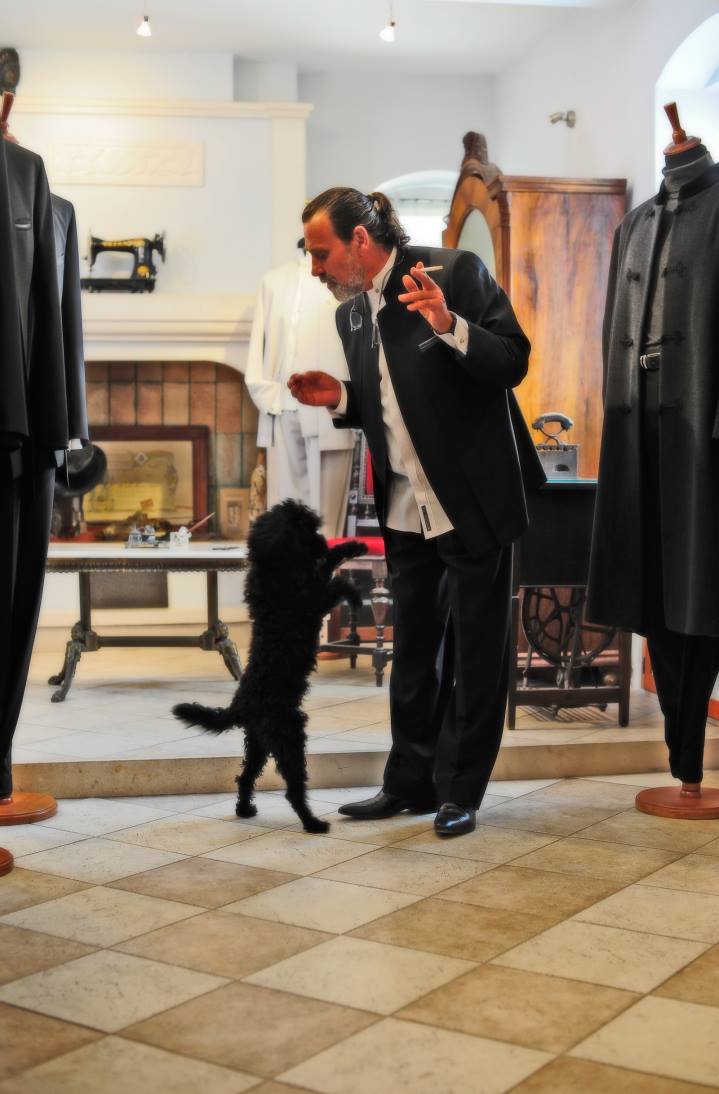
Considered a genius at the age of 5, hence the nickname ‘Gena’, it wasn’t until the age of 15 that the Trogir tailor sewed his first suit. While it was not Dalmatian, but classic, that is when Gena began to hone his skill. Two years later, he married, and soon after had his first child. As a young man, and already a father, he needed to find a way to feed his family. Thus, the idea of creating traditional Dalmatian suits was borne.
Gena styles a version of the civic suit, inspired by the beauty of the traditional types from the 19th-century. He begins with a strictly limited traditional outfit, and gradually adds new details to create a flawless, elegant form.
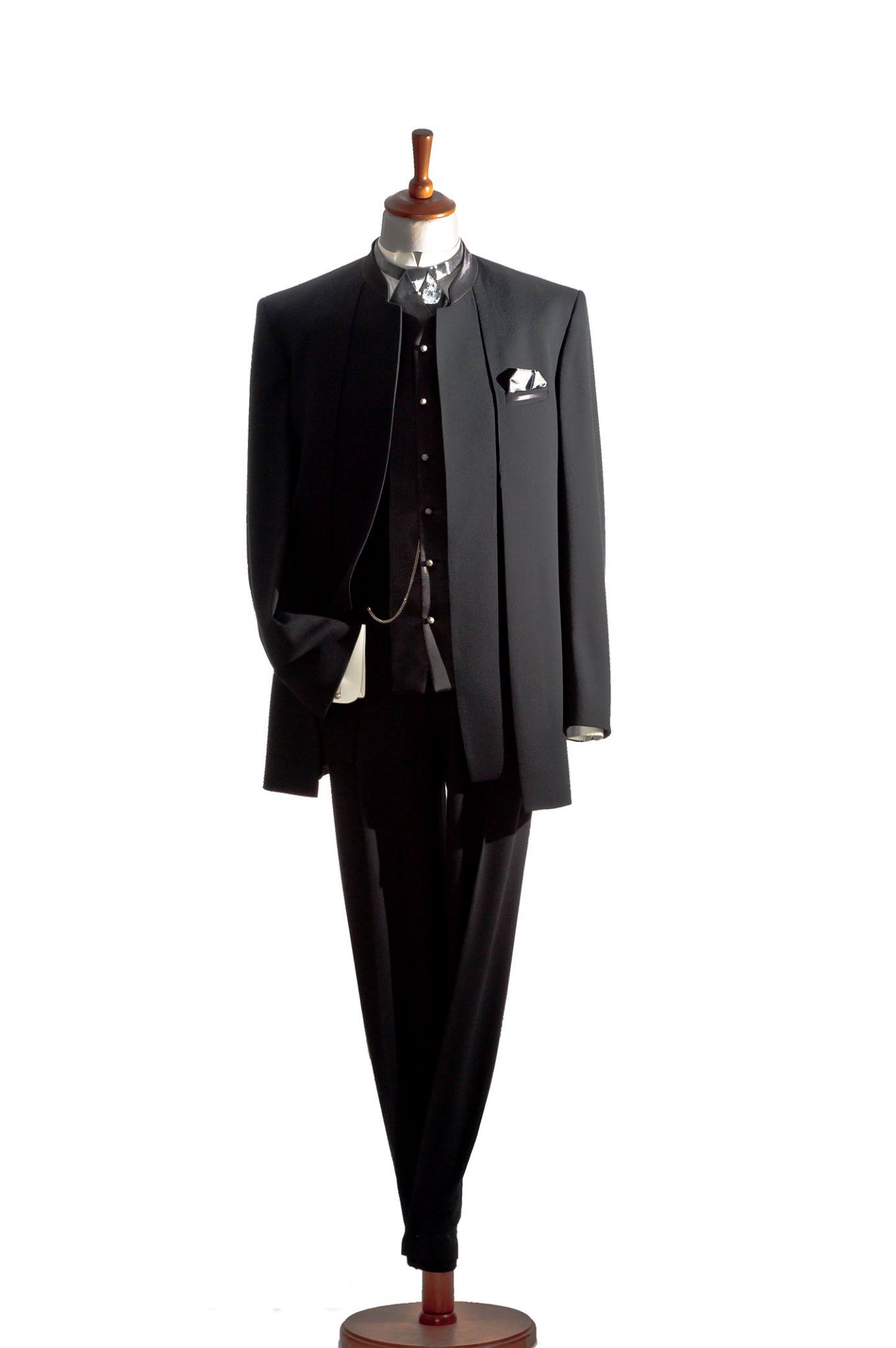
This blend of tradition and high-end fashion has made any Gena suit unique and recognizable in the world. Modernizing the lines and perfecting the quality and details of the past creates a distinctive style of high fashion in which the romantic trace of history and the spirit of modernity are discernable. Tiny details are added to enrich the whole and give a personal touch to simple, elegant and beautiful suits, with full freedom to introduce your personality and style.
“My suits have ten faces. Each shows one side of the man, but they all have something in common. It's simplicity, dignity, pride, leisure, and it all harmonizes to create the perfect suit,” says Gena, who is also known to claim himself as the ‘best tailor in the world’.
“The Dalmatian suit is the basic construction of the cut. The tradition of Dalmatian suits has existed for 120 years. In fact, I do nothing more than repeat what has been proven best and add my own details that tell a new story,” says Gena.
Gena’s skills have long been recognized by many celebrities and various media. His passion for the craft is noticed at first glance.
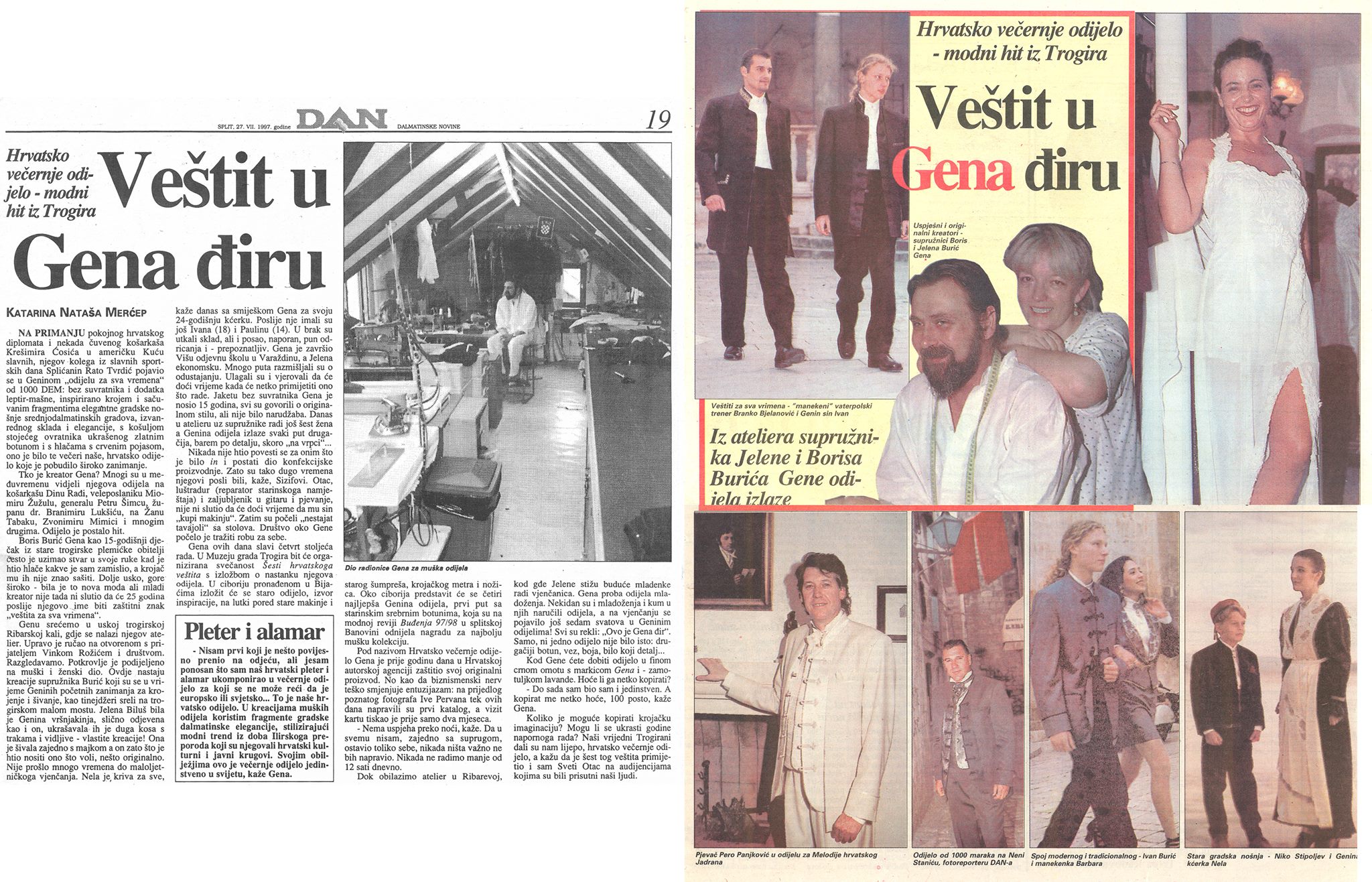
Gena suits have been worn by Formula One's Bernie Ecclestone, Spanish opera tenor Placido Domingo, and German racing driver Sebastian Vettel.
The first diplomatic gift US President Barack Obama received from Croatia was a Gena suit, from the hands of Biograd Mayor Ivan Knez in 2009. Gena said he didn't sleep for three days while creating it.
Croatian stars, like Stipe Mesic, Goran Ivanisevic, and Dino Rada barely make a dent in his local clientele.
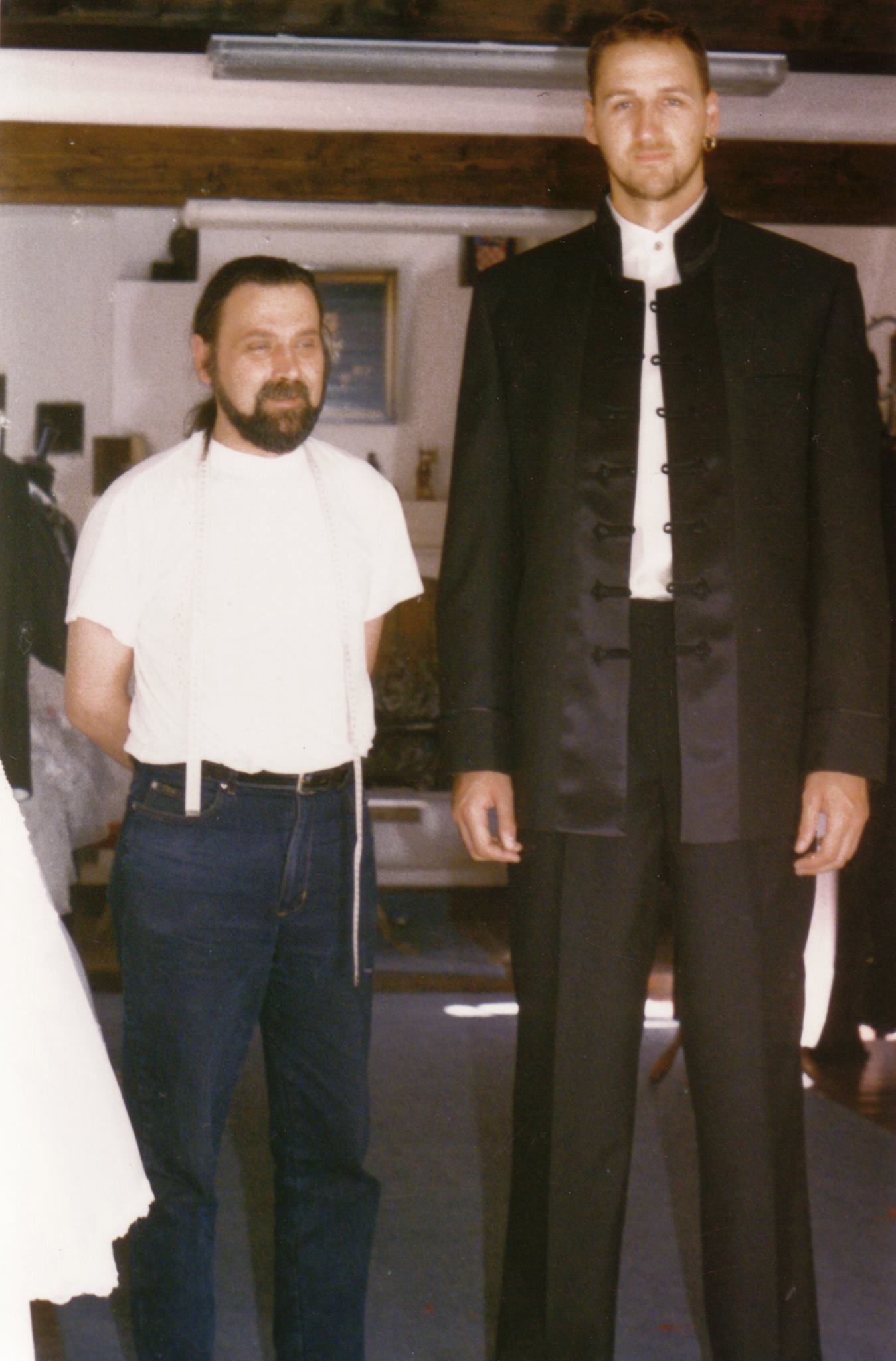
Gena even created a custom suit for multimillionaire Bruce Grossman, who sailed to Croatia in summer on his $40 million 'Forever One' yacht. Grossman tried on the suit in the presence of his family and friends. When Grossman left the room, Gena recalls that it went silent. Grossman’s wife spoke first.
"I'm fascinated,” she claimed, which Gena considers the highest praise he can receive for his work.
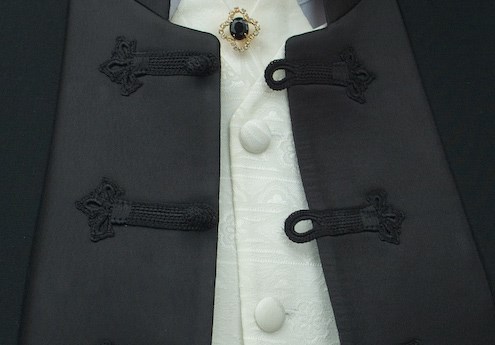
Gena’s intense emotion, unparalleled passion, and meticulous detail, fused with an ode to tradition and eye for elegance, give birth to works of art that are timeless, bold, and beautiful.
“When you see a man in my suit, you have to look at him, whether you like it or not. No matter who you are, poor or rich, you'll stop for a moment, shut up, and look at him.”
To read more about the modern masters leaving their mark on Trogir today, as well as the latest from this gorgeous UNESCO World Heritage Site, follow the dedicated TCN Trogir page.
Trogir, Marked by Masters: Red Coral Jewelry from Mišel
November 28, 2019 - TCN meets the modern masters of Trogir in our latest series. First up, the red coral king Marin Miše of Mišel jewelry.
Earlier this week the town of Trogir unveiled a new branding strategy, visual identity, and promotional video, becoming the first coastal destination in Croatia to use branding at such a serious and professional level.
The result of the creative process is the slogan “Marked by Masters”, influenced by the continuity of life in Trogir for over 3600 years, the great masters who have operated in Trogir since the Middle Ages, and the indelible traces that these masters leave.
While the medieval master builders, sculptors, and stone-cutters who lived and created in Trogir left their mark through the traces of graffiti around the town, centuries later, we can find Trogir’s modern masters thriving as artists, chefs, jewelers, tailors, and klapa singers, to name a few.
Today, we meet Marin Miše of Mišel, a master of red coral jewelry.
Wandering Trogir’s twisted streets, it’s easy to miss the unassuming entrance to the Mišel workshop, nor would anyone presume that the expertise of five generations of red coral jewelers could be found behind their doors.
Namely, Mišel is a family-owned business with a tradition lasting over 100 years. Run today by Marin Miše and his two sisters Marina and Vesna, the family’s jewelry tradition began by great grandfather Duje in the 19th century, though the family’s first storefront came only in 1932 when grandfather Filip opened a shop in Split.
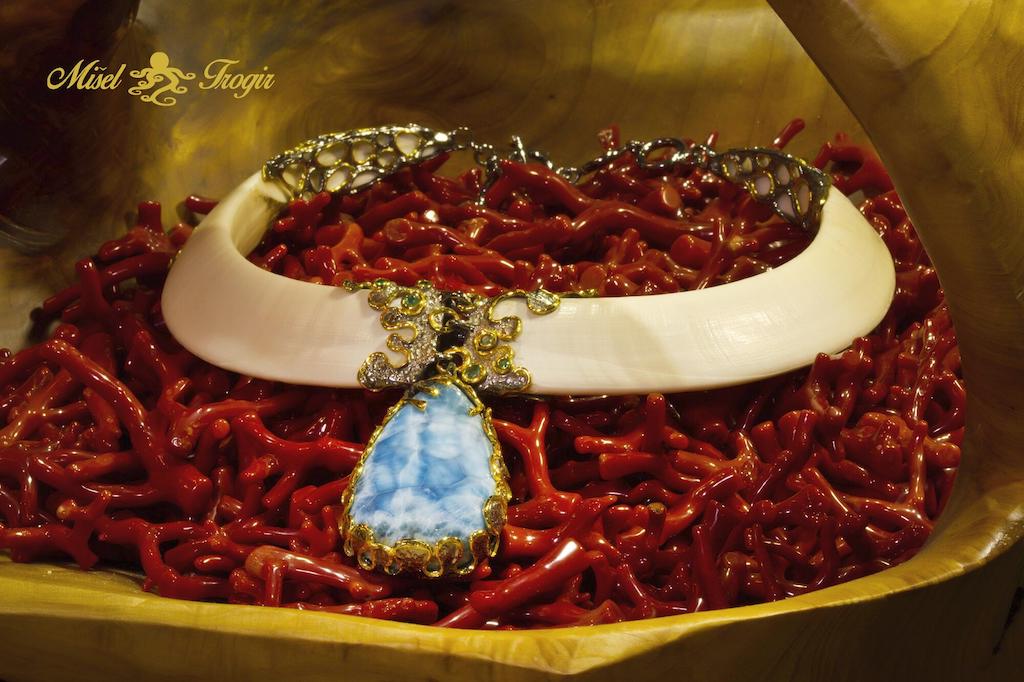
“Duje had three sons: Marina, Filip and Vjeko, who were famous jewelers, though Filip was the most famous. In 1937, when Roma and Hajduk played in Split, he gave Hajduk's best player Mario Krulz a gold watch. He had his shop on Morpurgova poljana in Split. My grandfather Aleksander was Marina’s son. He was born in 1920 and at the age of 12, he made his first gold brooch. In 1962, he took part in an exhibition in Milan, where he presented two models of gold rings and garnered all praise. My grandfather opened his first store in 1970 near Trogir's southern city gate. In the 1980s, the shop moved closer to the current location, which has been at Gradska ulica 22 since the early 1990s. Unfortunately, my father Gordan, who was also very successful in running the business, died early,” Marin recalled in an interview for Slobodna Dalmacija back in 2016.
Marin’s mother and father were killed in a car accident when he was 18. He has been determined to continue their craft ever since.
Today, Mišel creates jewelry and art pieces from precious metals, gems and other natural materials borrowed from the earth and the sea.
“I travel the world in search of high-quality gemstones and corals. Mines in India, Asia, Africa, and South America supply the perfect materials for our collection of cosmopolitan jewelry that exudes the Mediterranean spirit,” Marin says.
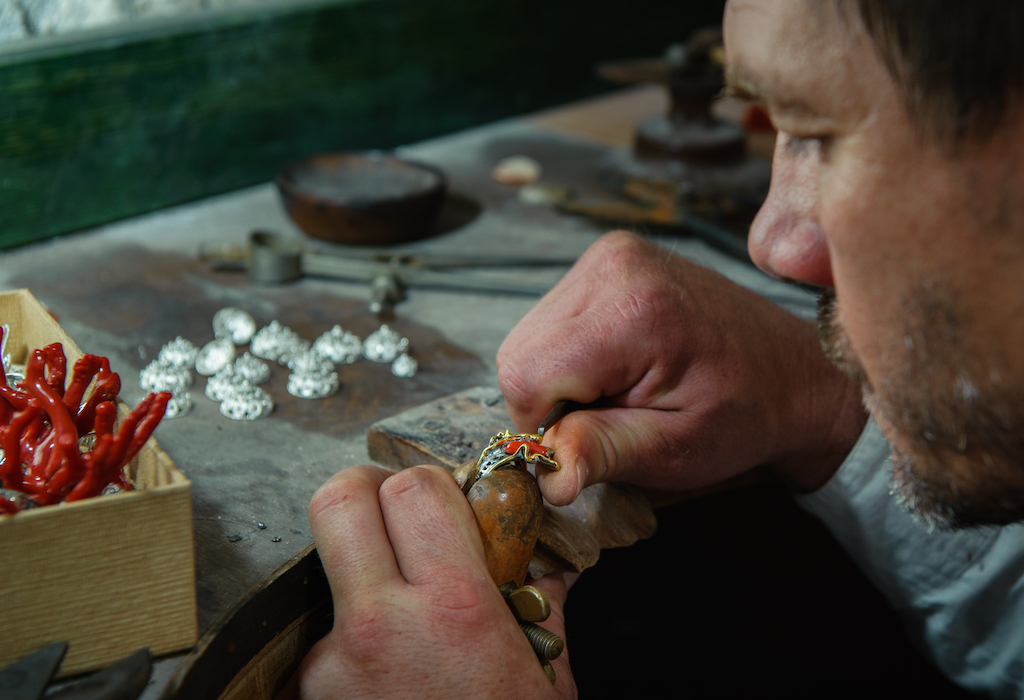
Given he has the right inspiration and materials, Marin claims he can craft a piece of jewelry in just a few hours - moments even. However, more complex pieces can see the process take years. This, of course, depends on how easily the materials are acquired and how grueling the artistic process is based on the needs of the client.
Marin gathers his inspiration from nature, which can be seen in Mišel’s considerable collection of red coral jewelry, their most recognizable product.
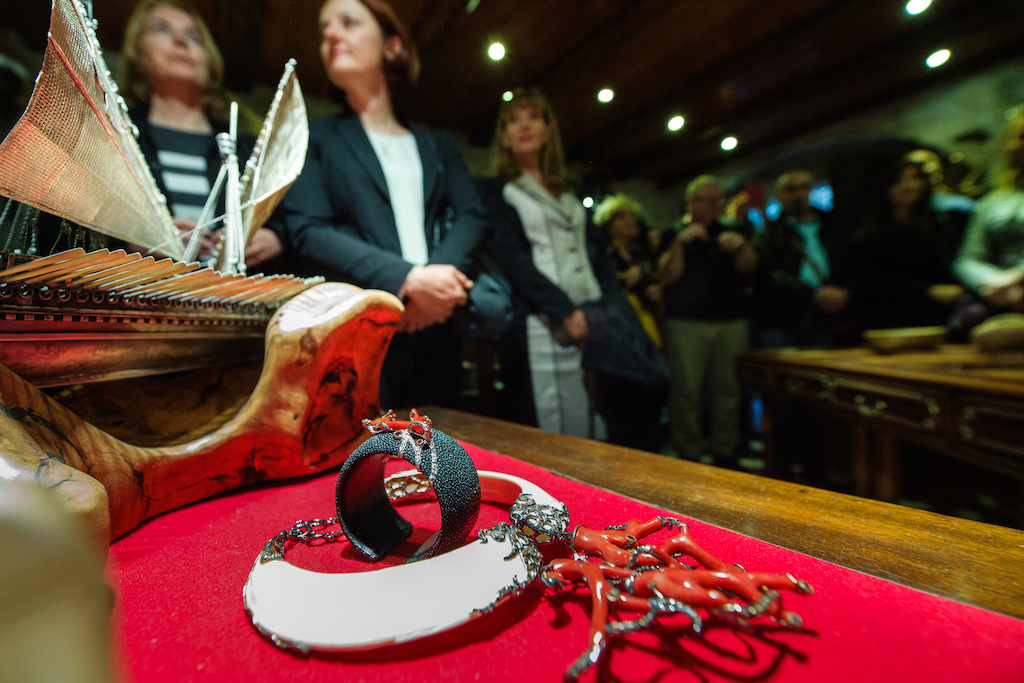
Thanks to Mišel’s unique coral, they’ve been lucky to travel not only around Croatia, but the world. In addition to the mineral fairs in Split and Zagreb, Mišel is a regular in the United States at the Tuscan Gem Show, the largest in the world.

“My jewelry pieces are not just jewelry; they are small sculptures. I design them and craft them with care and love. They will be recognized by people who feel a strong connection to Mother Nature and the Creator. More than one hundred years of keeping the tradition and following modern trends is no small feat,” Marin says.
Mišel is currently preparing for the next Tuscan Gem Show in January 2020, but until then, you can find them in the heart of Trogir, at Gradska ulica 22, or in the lobby of luxury hotel Le Meridien Lav in Split. And if you're not in Croatia? Take a look at the creative coral collections on Mišel's website.
To read more about the modern masters leaving their mark on Trogir today, as well as the latest from this gorgeous UNESCO World Heritage Site, follow the dedicated TCN Trogir page.


